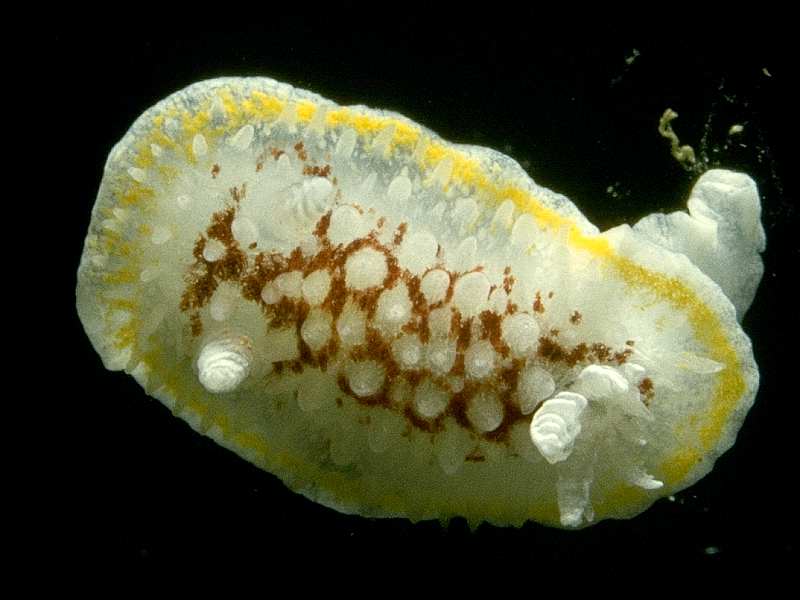| MOLLUSCA : Nudibranchia : Calycidorididae | SNAILS, SLUGS, ETC. |
Diaphorodoris luteocincta (M. Sars, 1870)
 |
| Diaphorodoris luteocincta |
Description: This animal may grow to up to 11mm in length. Unlike the species in the genus Onchidoris, D. luteocincta has a conspicuous coloration. The mantle is white with a central red blotch. The mantle tubercles are white and conical in shape. There is a yellow band around the mantle edge.
Habitat: Feeds on ctenostome bryozoans such as Nolella and is often found on silt covered rocks.
Distribution: Found all around the British Isles and reported from Norway to the Mediterranean. Several other species occur in the Mediterranean and the true D. luteocincta may not occur there.
Similar Species: The colour of this nudibranch distinguishes it from any other in the British Isles. Diaphorodoris alba, which occurs in the Mediterranean and north to Rathlin O'Birne Island, Co Donegal, Ireland, is distinguished by absence of the red pigment in the centre of the back and a continuous yellow edge to the mantle.
Key Identification Features:
- White mantle with yellow rim.
- Red patch in the centre of the back.
Distribution Map from NBN: Diaphorodoris luteocincta at National Biodiversity Network mapping facility, data for UK.
iNaturalist: Diaphorodoris luteocincta at iNaturalist World Species Observations database.
GBIF data for Diaphorodoris luteocincta
WoRMS: Diaphorodoris luteocincta at World Register of Marine Species. Accepted name: Diaphorodoris luteocincta (M. Sars, 1870). AphiaID: 140630.
Classification: Biota; Animalia; Mollusca; Gastropoda; Heterobranchia; Euthyneura; Ringipleura; Nudipleura; Nudibranchia; Doridina; Doridoidei; Onchidoridoidea; Calycidorididae; Diaphorodoris
| Previous species | Next species |
| Picton, B.E. & Morrow, C.C. (2024). Diaphorodoris luteocincta. (M. Sars, 1870). [In] Encyclopedia of Marine Life of Britain and Ireland. https://www2.habitas.org.uk/marbiop-ni/speciesaccounts.php?item=W13420. Accessed on 2025-04-10 |